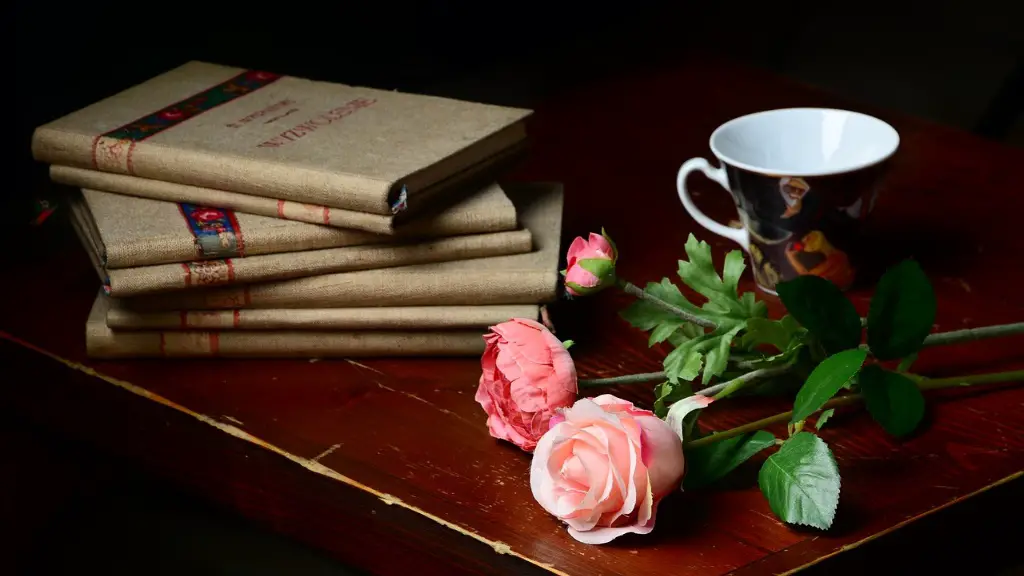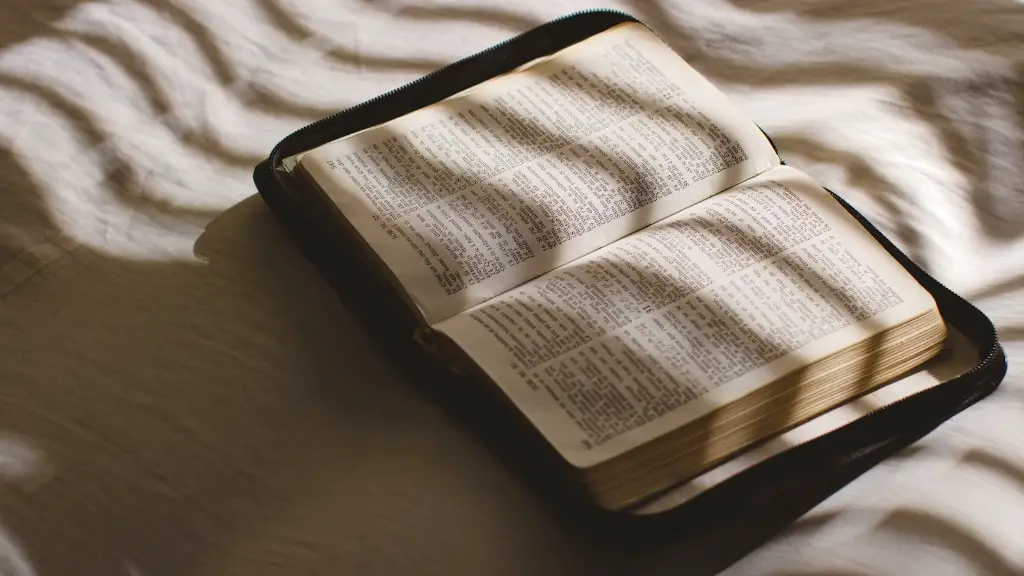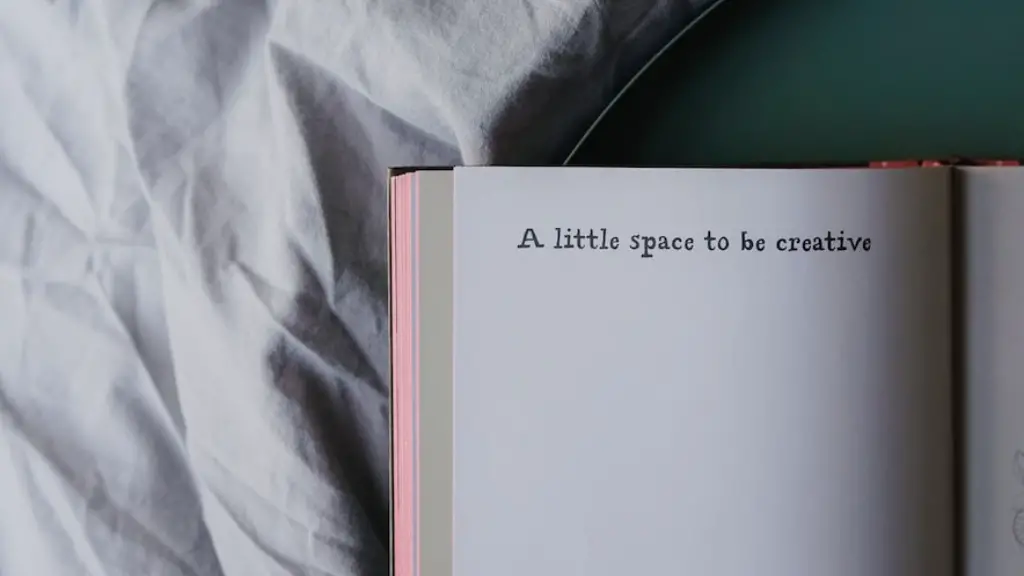How to site poetry
Poetic works have been inspiring people for ages, and yet, citing them can be quite a challenge. Finding out where a poem comes from or who wrote it can sometimes be a confusing task, especially when it is in an anthology or compilation. Additionally, the rules and formats of citing poetry can vary greatly between sources, styles, and languages. For example, quoting longer passages of poetry will require differently formatted citations than citation in subsequent references. Additionally, different publication styles may put emphasis on particular elements of a poem in the bibliography or works cited page.
Despite the complexity, there are some standard elements of citing poetry. For starters, citations should include the author’s name, the poem’s title and the publication data. Subsequently, the next mentions of the poem should include the author’s last name and the full poem title. Understanding the basic elements and different styles of citation can be very useful in creating a successful project. Moreover, since some sources may be more hidden than other, citing poems can be even more challenging.
Looking for useful sources for citing poetry might take some extra effort. For instance, finding the title of an anthology or compilation should be noted when quoting an excerpt from a poem given in a collection or an edition, including title, edition information and publishers name. Additionally, in some occasions, certain letters, diaries or journals can also include some poetic works that may need to be cited correctly. As such, it is important to search for the author names, date and publication, whenever possible, before citing them.
When quoting a particular poem, it is important to keep track of the original source. This applies both on short and long quotes, triggering different quotation rules for each occasion. For short quotes, or when quoting fewer than three lines of the poem, the quote should be incorporated into the project within quotation marks. If the poem has line numbers, they should be mentioned in the citation. For longer quotes, quotations marks are to be substituted with a block quote, without quotation marks and covering the entire quote, while keeping the original format of the text.
Citing poetry can also change significantly according to the style of publication. Generally speaking, the most commonly used styles in citing poetry tend to be American Psychological Association (APA), Modern Language Association (MLA), and Chicago/Turabian. In each style, expressing the poem’s name, the author’s name, and publication information is slightly different. Moreover, sometimes source information of a poem is not available and it can be difficult to find the correct citation information. In those cases, citation should state the poem’s title, the line numbers if available, and the phrase “no source citation available”.
Step by Step Analysis
Understanding how to properly cite a poem is a key step in writing projects. It is important to determine the source of the poem and the appropriate style of citation. A step-by-step analysis can help make it easier. Firstly, use Google Books or the library catalogue to find the original poem. Identify the author’s name, the poem title, and the publication information. Secondly, look up the bibliography format for the style of the project based on the guidelines of the instructor or publication. Thirdly, record all the elements of the citation as per the publication’s style. Lastly, use the formatted citation.
In some occasions, some of the sources might not be available or certain elements of the citation may not be available. In those cases, it is important to remember to mention the phrase “no source citation available”. Additionally, when citing a poem from an anthology or a compilation, it is important to make sure to mention the title of the anthology or compilation, the edition information and the publishers name in addition to the author’s name, the poem’s title and publication date of the poem.
Different Types of Poetry
Although the basics of citing poetry remain the same regardless of the type of poem, there are a few slight stylistic changes in citing different types of poetry. Firstly, it is important to determine the type of poem being quoted or cited. Classic sonnets and other well-known poems are styled differently than those written in a less established form. Secondly, it must be taken into consideration the source formatting when citing the poem for projects involving poems from an anthology or compilation. Lastly, the citation formats for commonly used print and online sources should be considered.
In general, for single-author anthologies and compilations, the citation should contain the author’s name and the title of the book, as well as its publisher and date. For multi-author compilations, the editor’s name is to be added. Nevertheless, it is important to always ensure that the format of the poem is clear and easy-to-read. Moreover, it is also important to note that certain citation formats can pick up the title of the poem differently. For instance, a poem that has a parenthetical title requires its collection’s title to be written without italics.
Finally, per the APA sixth edition style, long-quoted poetry should not be taken out of context or broken over two or more lines in the project. The poem should be placed in a block format and the text should remain double-spaced. Usually, poetry should be indented the same way as a regular paragraph for projects following the MLA style. In this case, the quote should begin on a new line, indented from the left margin and with no quotation marks.
Quotations and In-text Citations
When working with poetry, it is also important to be aware of the differences between when to use quotations marks, when quoting inside a project, and when to use in-text citations. For short quotes, quotation marks and the page number should be mentioned. In this case, the page number is usually indicated either at the end of the sentence or within parentheses at the end of the cited material.
Long quotes or those longer than three lines require a different approach. For translations, the title of the original and translated version should be included. Additionally, when it comes to long quotes and an overall citation, it is important to note the use of line numbers. For the latter, the line numbers are to be included in parentheses after the quoted material. However, when the quote is not taken from direct page numbers, then the source should be noted at the end of the quote.
Copyright Laws and Proper Use of Poetry
When citing poetry, it is essential to keep in mind copyright laws. Quoting poems or quotes longer than five lines requires permission from the original sources or the author’s estate. Moreover, when quoting or citing a poem, remember to include the phrase “used by permission”. Ultimately, both citation and copyright requirements should be met in the same project, as they both protect an author’s work and honor their original work.
Finally, when it is not possible to trace the original source, it is recommended to mention the poem or quote with a “no source citation available” note, as such quotes still needs proper citation. This also supports a proper use of poetry and allowing the poet’s property to be respected as it is, from the foundation of the work all the way to the conclusion.
References and Documentation
Citing poetry correctly goes beyond simply adding the elements of the source in a project. Understanding different rules of citation, how to recognize particular poem styles, and how to pay respect to the poet’s work are all key steps in producing quality projects. When it comes to properly citing a poem, appropriate references and documentation of the sources used can include books, anthologies, collected editions, print sources, electronic sources and even manuscripts.
In general, when a poem is quoted or cited, the story behind it should be clearly documented, including information directly related to the poem or its author, such as the author’s name, their background, the title and any other elements that may have influenced its production. Additionally, external references or additional sources available online should be taken into consideration when citing a poem, as they may provide solid support to the subject or the story behind the poem.
Proper Citing Structure
Finally, it is important to make sure the structure of the citation format of the poem is correct. All necessary information should be included, such as the author’s name, the title and the publication date if known. Additionally, the line numbers if relevant should also be provided in the citation format for longer passages of poetry if available. Moreover, source information for each citation should be consistent throughout the paper.
Once the source is given, understanding how to properly cite poetry in a project can become easier. One should pay attention to the date when the poem was written, the author, the poem title, and the original text or source. Moreover, when it comes to multiple authors, it is important to include the editors into the citations. Ultimately, when working on a project involving poetry, using these formatting techniques will also help to convey its full potential as well as honoring the poet’s original work.
Final Remarks
Even though it may take some time and effort, citing poetry can have its benefits when working on a project. Firstly, it is always important to know the original source of the poem. Secondly, the relevant elements of the poem should be accurately included in the citation. Lastly, the style of citation should be followed and always make sure to use the correct format. Once you master the elements of citing poetry, working on projects involving it can become much easier.


